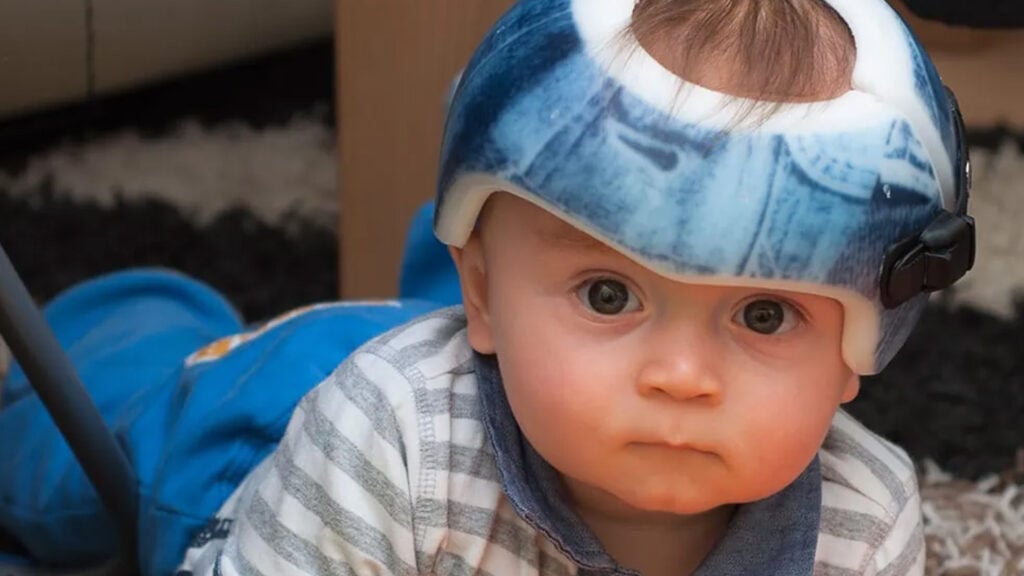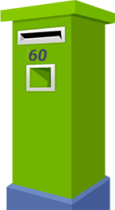Head shape deformities in babies are more common than one might think, with over 3 percent of newborns experiencing some form of misshapen head, such as a flat spot.
These deformities can range from mild to severe, with nearly half falling into the mild or moderate category. However, there is a solution that has been proven to be highly effective in correcting these deformities – orthotic treatment with a cranial remodelling helmet.
What causes irregular head shape in babies?
Irregular head shape in babies can be caused by a variety of factors. One common cause is positional plagiocephaly, which occurs when a baby spends too much time in one position, leading to the flattening or asymmetry of their skull. This can happen if a baby consistently sleeps on the same side or constantly rests their head against a firm surface.
Brachycephaly is another cause of irregular head shape in babies also known as flat head syndrome. This condition involves a flattening of the back of the head, leading to a wide and shortened appearance. Scaphocephaly is the least common head shape deformity, which is characterised by a long and narrow head shape.
Another potential cause is congenital craniosynostosis, which is a condition where the bones in a baby’s skull fuse prematurely. This can result in an abnormal head shape and may require surgical intervention.
How does an infant head-shaping helmet work?
Cranial remodelling helmets, commonly referred to as baby head shaping helmets or cranial orthoses, are custom-made helmets designed to gently guide the baby’s skull growth. Infant helmets for flat heads are typically made of lightweight materials and have adjustable straps to ensure a snug fit.
The main purpose of helmet therapy is to encourage growth in specific areas of the baby’s head that need correction. This pressure helps to mould the soft bones of the skull into a more symmetrical shape over time. The helmets are typically worn for a few months, with the exact duration depending on the severity of the deformity and the age of the baby.
When to start using an infant helmet to shape their head?

Orthotic treatment with helmet therapy is most effective when started early, ideally between 4 and 6 months of age. This is because the baby’s skull is still growing and the bones are more malleable. Starting treatment early allows for better results in a shorter period of time.
How to get fitted for an infant head shaping helmet
The process of getting an infant fitted for a head shaping helmet involves visiting a specialist, such as a paediatric orthotist or cranial specialist. They will assess the baby’s head shape and determine if a helmet is necessary. If so, they will take measurements and create a custom-made helmet for the baby.
The helmet is typically made from a 3D scan these days. This ensures a precise fit and allows for adjustments as needed throughout the treatment process. The orthotist will also provide instructions on how to properly wear and care for the helmet.
Once fitted, the baby will wear the helmet for most of the day , typically around 23 hours a day. It is important to remove the helmet for bathing and during supervised tummy time to allow for natural movement and development.
How long does a baby wear a head-shaping helmet for?
Regular follow-up appointments with the specialist will be scheduled to monitor the progress of the treatment. Adjustments may be made to the helmet as needed to ensure optimal results. The overall duration of treatment can vary, but most babies wear the helmet for approximately 3 to 6 months.
In some cases, the baby’s skull may naturally correct itself over time without intervention. However, if a deformity persists or worsens as the baby grows, orthotic treatment with a helmet may be recommended. It is important to note that cranial remodelling helmets are not necessary for all cases of head shape deformities.
Overall, orthotic treatment with a cranial remodelling helmet is a highly effective and non-invasive solution for correcting head shape deformities in babies. It allows for gentle reshaping of the skull and can lead to significant improvements in a relatively short period of time. If you suspect that your baby may have a head shape deformity, it is important to consult with a specialist who can assess the situation and recommend appropriate treatment options.
As a parent, any potential problems with your child’s head is likely to be concerning for you, so it’s important to get the right advice about the best way to address it. If you notice that your baby’s head shape is not right and/or looks strange, our Cranial experts at Orthotics House are just one click away. Book an appointment today for a detailed assessment of your child’s head to make an informed decision. Our qualified professionals in Hamilton and Hastings will make your cranial treatment journey stress-free.




